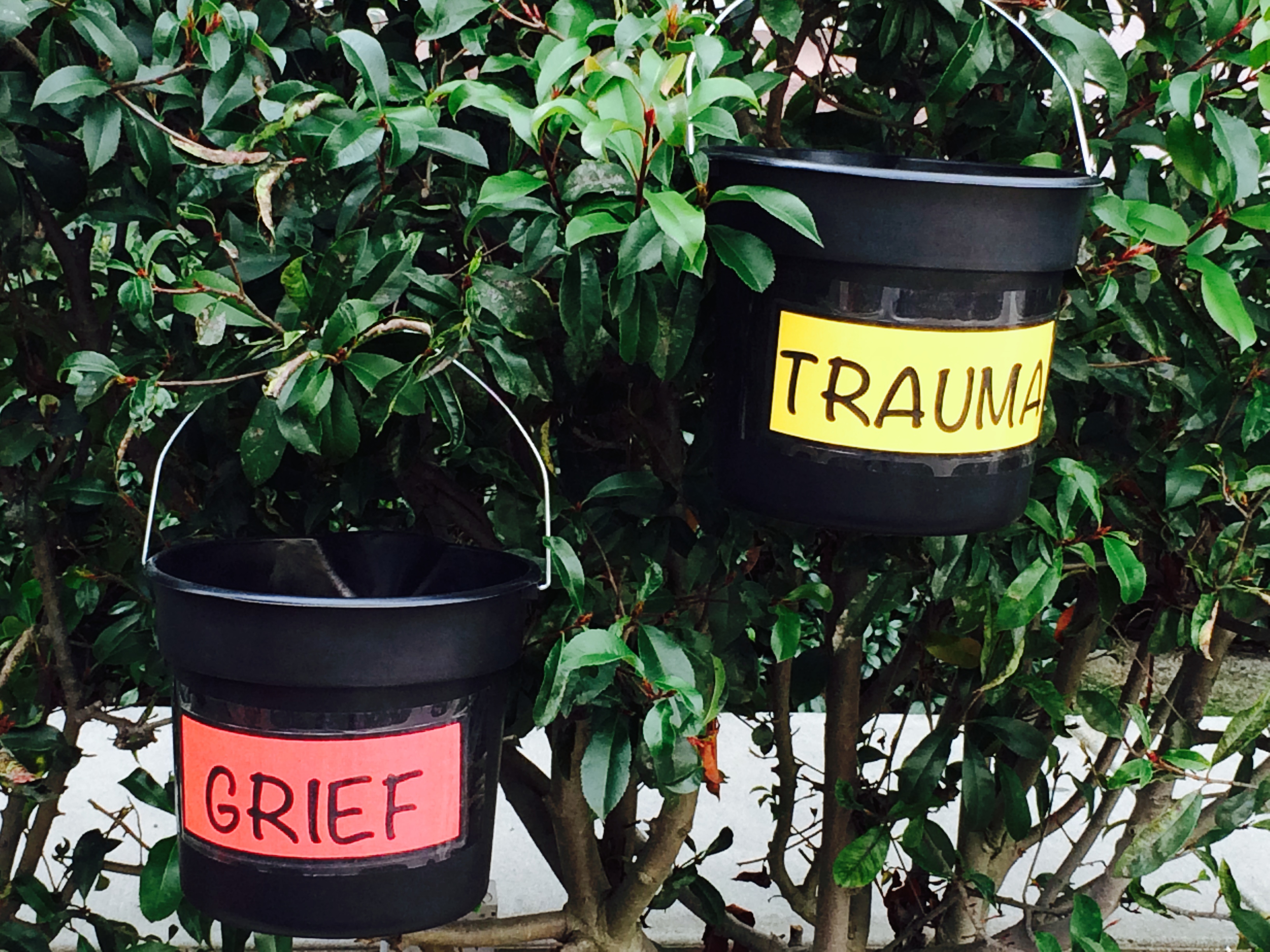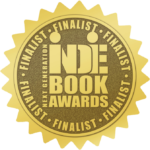 “Trauma is hell on earth.
“Trauma is hell on earth.
Trauma resolved is a gift from the gods.”
– Dr. Peter Levine
I met the biggest cockroach of my life one spring evening in Kingston, Jamaica. It was my senior year of college and I was on a volunteer service trip with a handful of other students from Boston. Daytime hours were spent working in impoverished neighborhoods that housed various shelters, schools and care centers. Evening hours were spent getting to know our incredibly generous Jamaican host families. They served us breakfast with fresh juice made from the fruit growing in their yards, opened their vibrant lives, and shared their music and culture. The family I stayed with owned a modest home with an indoor-outdoor cold running shower. I say “indoor-outdoor” because even though I stood showering indoors, the cut-outs in the cement shower slabs allowed me to see the birds in the papaya trees and feel the tropical breeze outdoors. I guess the cut-outs in the cement shower slabs also allowed various crawly creatures to come in and out of the house at their leisure. But that was fine by me because I loved camping, the outdoors and all things nature.
 One evening, as I sat on the toilet facing that shower, I reached back to grab the toilet paper roll that was sitting on the back of the toilet tank. As I held the roll in front of me vertically, ready to unwind some paper, a dark brown head with two longer feelers popped up from inside the roll. Like a slow motion movie reel, a cockroach THE ENTIRE LENGTH OF THE TOILET PAPER ROLL! proceeded to climb out – inch by inch – of his secret hiding place and crawl toward my hand, which was still holding the roll. Needless to say, I freaked. I jumped off the toilet seat, shorts still down at my knees, and hurled the roll and its attached roach across the room. I remember my body shaking in quiet shock, disgust and horror for quite awhile, as I watched the cockroach scurry through one of the openings in the shower slabs and escape into the night.
One evening, as I sat on the toilet facing that shower, I reached back to grab the toilet paper roll that was sitting on the back of the toilet tank. As I held the roll in front of me vertically, ready to unwind some paper, a dark brown head with two longer feelers popped up from inside the roll. Like a slow motion movie reel, a cockroach THE ENTIRE LENGTH OF THE TOILET PAPER ROLL! proceeded to climb out – inch by inch – of his secret hiding place and crawl toward my hand, which was still holding the roll. Needless to say, I freaked. I jumped off the toilet seat, shorts still down at my knees, and hurled the roll and its attached roach across the room. I remember my body shaking in quiet shock, disgust and horror for quite awhile, as I watched the cockroach scurry through one of the openings in the shower slabs and escape into the night.
I clearly remember trembling while thinking, “I’ve just been traumatized by a cockroach!”
Now. There are 3 parts of this story I would like to highlight:
- I met Mr. Giant Jamaican Cockroach over 20 years ago now, but to this day, I ALWAYS peek inside toilet rolls if they have been sitting alone with no internal plastic roll thingy connecting them to the wall. I don’t care if I am using the bathroom stall at a 5 star-hotel. I always look. Because even small experiences can stay with us forever.
- My body shook in “quiet shock, disgust and horror”. Because sometimes there are no words to express the fright, fear or suddenness of events that come out of the blue.
- I know now that the cockroach incident caused me STRESS- not TRAUMA. Not all stressful events are traumatic. But all traumatic events are way beyond stressful.
I learned the true meaning of trauma in July of 2012.
Chaos… transitioning back to the USA from overseas… personal belongings on a container ship … temporary housing… borrowed furniture … rented cars … travel… summer visitors… husband makes group reservations for family dinner… goes out for a quick drive… never shows up for dinner… doesn’t answer his cell phone… one hour… two hours… ten hours… search, pray, wonder… file a missing persons report… worry, fear, concern… hire a private investigator… terror, dread, hysteria… two weeks later… on July 30, 2012… our wedding anniversary… police detective at the house… hands me husband’s backpack and wallet… local photographer was taking nature shots near rugged mountain and lake…dangerous curvy roads in that area… other vehicles have gone off the road there too… numerous signs posted… photographer sees vehicle in the trees below…… calls California Highway Patrol… CHP finds missing rental vehicle… finds husband’s body… medical examiner can’t positively identify his body… two weeks in the summer sun… needs dental records… no dental records… go through photo albums… find close-up pictures of husband’s smile… medical examiner can do an overlay of his teeth… then they will release his body… oh, today is your wedding anniversary?… and tomorrow is your birthday?… I’m so sorry… Happy Anniversary… Happy Birthday…

I guess I always had misinformation about the term “trauma”. I thought that trauma, and its stress and aftermath called Post Traumatic Stress Disorder (PTSD), were reserved for people who had survived violent situations like rape, abuse and war. I had no idea this term could or should apply to me and my new life. I have learned a lot since 2012. I have learned that trauma most certainly does apply to my peers who have been raped, abused, and at war. But it also applies to me and my peers who, collectively, have had the experiences of burying our stillborn babies, performing CPR on our small children, cleaning wounds for our spouses dying of cancer, witnessing our parents undergo massive medical treatments, organizing search parties for our missing siblings, and rehabilitating our bodies, minds and spirits after auto collisions.
Peter Levine, author of Healing Trauma, states that “Trauma is the most avoided, ignored, denied, misunderstood, and untreated cause of human suffering”. He refers to trauma as the often debilitating symptoms people may suffer from in the aftermath of a “perceived life-threatening or overwhelming experience”.
The American Psychiatric Association’s DSM IV lists the two conditions that must be present in order to begin evaluating an adult for Post Traumatic Stress Disorder (PTSD):
- the person experienced, witnessed, or was confronted with an event or events that involved actual or threatened death or serious injury, or a threat to the physical integrity of self or others.
- the person’s response involved intense fear, helplessness, or horror.
So, yes. I have experienced trauma.
And maybe you have too.
Our experiences have been different.
But somehow we both must learn how to manage trauma’s numerous symptoms so that we can move with it and through it to restore, recover, and rebuild our lives.
There are absolutely no containers massive enough to hold the anguish, misery, agony, torment and suffering that comes with the TRAUMA experience.
Just as there are no containers massive enough to hold the sadness, sorrow, tears, pain, emptiness, numbness that comes with the GRIEF experience.
Yet many of us are here… sometimes holding BOTH buckets- GRIEF and TRAUMA.
 How do we even attempt to cope?
How do we even attempt to cope?
It is only when we recognize what we are dealing with that we can truly get the assistance we need. And assistance is there!
Just as you did with common grief reactions in Blog #2 (The Grief Bucket), take a look at the list of common trauma reactions in adults (below) to determine what might be in your own TRAUMA BUCKET. Then read on for more helpful tools, resources and single small steps you can take to work through your trauma and its symptoms.
BEHAVIORAL
easily startled, jumpy, on edge, over-alert to danger, detached or withdrawn, fearful or nervous, anger outbursts, irritability, sleep disturbances, avoiding thinking about trauma, attraction to dangerous situations, addictive behaviors, and avoiding people, places, activities, thoughts, feelings, conversations associated with traumatic event
MENTAL/EMOTIONAL
difficulty experiencing emotion, difficulty concentrating, mentally shut down, emotionally shut down, guilt, shame, sadness, anger, flashbacks, nightmares, night terrors, disturbing memories and images, forgetfulness, depression,
SOCIAL
wanting to isolate from others, avoiding social interactions, feeling not understood by others, strained relationships, strengthened relationships, anxiety being with others, inability to make commitments
PHYSICAL
shallow breathing, increased heart rate, muscle tension, headaches, nausea, hot or cold sweats, vomiting or diarrhea, trembling, fatigue, worry, anxiety, repetitive thoughts, numbness, hyperactivity, panic attacks
(Lists adapted from DSM IV – American Psychiatric Association, Healing Trauma – Peter Levine, What Doesn’t Kill Us – Stephen Joseph)
Belleruth Naparstek, licensed clinical social worker and author of Invisible Heroes: Survivors of Trauma and How They Heal, emphasizes that “people who have successfully transcended PTSD are usually those who have used several interventions. Survivors who fared best were the ones who researched their own options, found out about the new therapies, tried various combinations, and essentially took charge of their own healing”. Naparstek refers to a “ten-prong approach” (page 323 in her book) for a comprehensive healing of PTSD that includes the use of tools and resources that are included in the A 2 Z Healing Toolbox. You can click on any of the A 2 Z links below to gather more information as you move along your path of restoration.
- C- Counseling
- G- Group Support
- D- Do Your Homework
- W- Western and Eastern Medicine
- H- Higher Power Help
- B- Breathwork, M- Meditation
- S- Slide Into Exercise
- E- Energy Healing
- J- Journal
- I- Imagery
It has been experienced that if the TRAUMA BUCKET can be dealt with in single small steps at a time, eventually it won’t be so heavy. And there are many tools and resources to help along the way.
As you continue to walk this journey, please know that you are not alone! There are thousands of us walking alongside you and holding you up with tools, resources, support, love and encouragement along the way.
– Susan






